Why are cherry tomatoes so good?
Small Cherry tomatoes have won universal recognition. Among their variety it is easy to choose a variety to suit every taste. Oval and round, orange and yellow, black and red - in salads and canned dishes they will become an excellent table decoration.
Description and characteristics
Cherry is a type of tomato that includes a large number of varieties, which have significant differences in appearance. But all varieties have one thing in common - small fruits similar to berries. Hence the name - “cherry”, which translated from English means “cherry”.
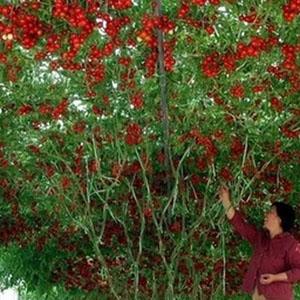 Varieties of varieties differ in height:
Varieties of varieties differ in height:
- tall (indeterminate),
- medium-sized (semi-determinate),
- undersized (determinant).
Ripening time:
- early ripening,
- mid-season,
- late ripening.
There are fruits that are suitable for harvesting for the winter, and those that are unsuitable for these purposes.. Tomatoes are grown in open ground, in a greenhouse, on a balcony or in a pot on a windowsill.
Advantages and disadvantages
Like any fruit, Cherry tomatoes have beneficial qualities for the human body and those that can cause harm.
Benefits of Cherry
Small tomatoes contain more nutrients than large tomato varieties.. Cherries are rich in B vitamins, potassium, magnesium, calcium, phosphorus, iron, vitamins C and E. They contain antioxidants and organic acids. The energy value of Cherry tomatoes is less than 15 kcal per 100 g.
Not suitable for everyone
Cherry tomatoes should be excluded from the diet or significantly limit it to people with metabolic disorders, cholelithiasis, as well as those suffering from peptic ulcers (organic acids of tomatoes irritate the diseased mucous membrane). The variety is not suitable for allergy sufferers whose bodies react to red vegetables and fruits.
How to grow a tomato
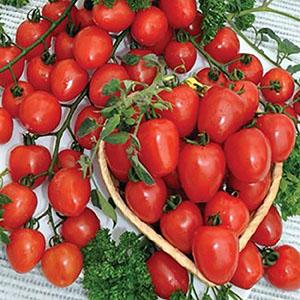 In addition to varieties planted directly in pots, caring for small tomatoes is not too different from caring for their larger “brothers”. But there are some peculiarities.
In addition to varieties planted directly in pots, caring for small tomatoes is not too different from caring for their larger “brothers”. But there are some peculiarities.
Always from seedlings
Cherries are grown in open ground only from seedlings, otherwise they simply will not have time to ripen. And warm soil is important for them.
Even when planting seeds in seedling pots, the soil must be well heated, especially if the soil is taken from the street - this is important for heat-loving “kids”.
The main thing is warmth and light
It is recommended to sow seeds from February to the end of March. Warmth and light are important for the proper growth and development of tomatoes. If there is not enough natural light (9-10 hours in the sun), then they are provided with an artificial light source.
Seeds germinate at a temperature of +15˚С, but the optimal temperature for them is +25-26˚С.
More about tomatoes:
How to care for the Parsley gardener tomato
Watering and replanting
The soil around the tomatoes should be slightly moist. Do not allow it to dry out or form a crust. But too much watering is also harmful. In April-May, seedlings are planted in greenhouses and greenhouses. They can be planted in open ground only after stable warming.
Hardening
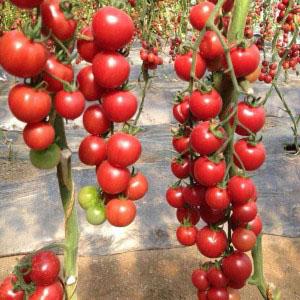 Before transplanting Cherries into open ground, they must be hardened off.. To do this, the seedlings are placed in a cool environment for 1-2 hours.Thanks to this procedure, the tomatoes will not only harden, but also acquire immunity to a number of diseases.
Before transplanting Cherries into open ground, they must be hardened off.. To do this, the seedlings are placed in a cool environment for 1-2 hours.Thanks to this procedure, the tomatoes will not only harden, but also acquire immunity to a number of diseases.
Disembarkation
Tomatoes are planted at a distance of approximately 0.5-1 m from each other, depending on the variety. Before planting, the plants stop watering for several days, thanks to this they take root better.
If the seedlings grew in peat pots, you can continue watering. The plant is planted together with pots, which themselves dissolve in the soil.
After disembarkation
After planting, continue to monitor watering and loosen the soil, without allowing a crust to form, weed out the weeds. If there are few fruits on the main clusters, the stepsons and additional branches can be left; if not, they can be removed. In this case, they simply break off the branches before the first fruiting clusters.
Growing in a greenhouse
Growing Cherries in a greenhouse is not much different from growing large varieties of tomatoes. To harvest crops all year round, greenhouses must be heated. They are made of glass or polycarbonate and equipped with a heating and lighting system.
Temperature and humidity
The temperature in the greenhouse should be +20-25°C during the day and +17-18°C at night. After germination, the temperature is reduced. Humidity is recommended 60-65%. The room must be ventilated regularly, especially during flowering.
Priming
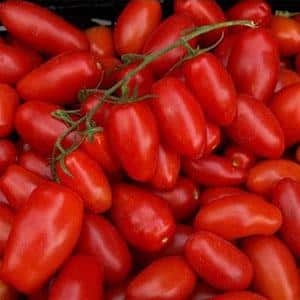 The soil for Cherry is renewed annually. The land should be well warmed and fertilized, for example, with peat, humus or special mineral fertilizers.
The soil for Cherry is renewed annually. The land should be well warmed and fertilized, for example, with peat, humus or special mineral fertilizers.
In autumn, dig up the soil and add humus or compost; norm: 6-8 kg per 1 sq. m. Spring soil preparation includes the application of urea (nitrogen fertilizer) - 12-15 g per 1 sq. m. m. Usually 20-30 g of potassium chloride and about 35 g of superphosphate are added to it.
Some gardeners advise leaving the prepared soil outside in frosty weather.. This will partially kill the pathogenic microflora.
Seed preparation
It is best to sow tomatoes in a greenhouse in late March - early April. For better germination, seeds are soaked in clean, warm water for several hours.
Sow in small holes or grooves about 1.5 cm deep, cover with soil and irrigate with a spray bottle (so as not to wash away) with warm water.
Processing of planting material
Seeds, folded in a bag made of natural fabric, are dipped in potassium permanganate for 15-20 minutes. You can also use growth stimulants. To prepare them yourself you need 1 tbsp. Mix a spoonful of wood ash with 1 liter of water. The solution should be at a temperature of +25˚C. Planting material is placed in it for 24 hours.
Read also:
Watering and fertilizing
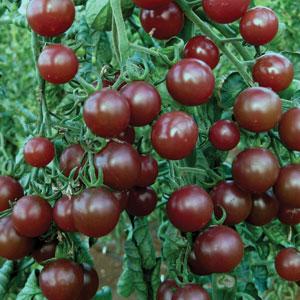 Watering is carried out in the same way as when planting in open ground. Tomatoes are fed with both purchased fertilizers and those made independently.
Watering is carried out in the same way as when planting in open ground. Tomatoes are fed with both purchased fertilizers and those made independently.
For example, nettles and dandelions are poured with water and left to ferment, stirring twice a day. The solution is ready when it has changed color and the grass has settled to the bottom. The infusion is filtered and the seedlings are watered with 1 liter per bush.
Support needed
Most varieties preferred for greenhouses are quite tall, so they are certainly tied up. This will not only support the stem during fruiting, but will also protect the tomato bunches from contact with the ground.
Unheated greenhouse
If the greenhouse is not heated, the temperature in it for sowing seeds for seedlings should be + 20-25 ° C. The seeds are planted in special containers, covered with film until the first shoots appear, and after 2-3 true leaves appear, they are planted in the ground.
If the temperature allows, you can sow the tomato directly into the ground. The picking procedure is carried out in the same way.
Prevention of diseases and pests
Diseases of Cherry tomatoes are usually the same as those of other tomatoes. Here are the most common ones.
| Name of the disease | Signs | Causes | Treatment |
| Late blight Most often it affects tomatoes in open ground. |
Subcutaneous spots on fruits, leaves and stems. A white coating forms on the underside of the leaf. | Large temperature changes and high humidity. | 20 days after planting in a permanent place, tomatoes are treated with the “Zaslon” preparation, and after another 20 – with “Barrier”. |
| Brown spot
Characteristic of tomatoes from film greenhouses (in the south it also affects ground greenhouses) |
Brown spots with a gray coating on the leaves. | High humidity, watering with cold water, low temperature at night. | The same drugs are used as in the previous paragraph. |
| Mosaic of tomatoes
The disease is common among both greenhouse and open-ground tomatoes. |
The leaves are covered with green-yellow spots, alternating with dark green coloring and curling and wrinkled leaves. | Viral infection; transmitted with infected seed material from plant remains of diseased plants. | Diseased bushes are pulled out and burned. In autumn or spring, special preparations are added to the soil. Seeds are disinfected before planting, and for prevention, the bushes are treated every 10 days with the following solution: 1 liter of skim milk, 15 drops of iodine, 10 liters of water. |
Pests
The greatest The following pests pose a danger to tomatoes:
- bearLives in the soil and gnaws plant roots. It is recommended to use the drug “Thunder” against it;
- wireworm It also damages the roots, but also penetrates into the stems. To get rid of it, the soil is limed and the drug “Bazudin” is used.
All tomatoes are good - choose according to your taste
Low and tall Cherry tomatoes for open ground and greenhouses are presented on the market in a wide range. Here are photos and descriptions of some varieties of small tomatoes.
Tomato Cherry red - an indeterminate, early ripening variety up to 1.8 m high. Up to 2.5 kg of fruit can be collected from one bush. Tomato weight is 15-20 grams. The fruits are red, sweet, collected in clusters of up to 30 pieces. Suitable for both fresh consumption and canning (you can use a whole brush).
Tomato Black Cherry – indeterminate variety. In a greenhouse, the plant reaches a height of 2-3 m, in open ground - 1.3-1.6 m. The stem looks like a grape vine. Productivity reaches 6-7 kg per 1 sq. m. The peculiarity of the fruit is its unusual color and sweet taste.
Tomato Strawberry Cherry - determinate variety, grows up to 1-1.2 m in height. Productivity up to 1-2 kg per bush. It has excellent taste, the taste is sweet, the skin is dense and does not crack. Suitable for canning, but, for example, juice cannot be made from them - the dry matter content is high.
Tomato Cherry fingers - a determinate variety intended for unheated greenhouses, growing on balconies and in open ground. Height - up to 75 cm. Fruit weight is 10-20 g, and the yield is 2.5-3 kg per 1 sq. m. Tomatoes can be canned or eaten raw.
Tomato Octopus Cherry - indeterminate variety, height - up to 5.5 m, capable of growing and bearing fruit in one place for several years.The fruits reach 50 g; 50 kg of fruits can be harvested from one plant. Suitable for consumption raw, canned, and for making juices.
I have an opinion
Here we present reviews from some gardeners about the varieties described above.
Ivan, 45 years old: I have been growing different varieties of cherry for several years, they all have their pros and cons. Among the strengths of the Red Cherry variety is disease resistance. It ripens quickly. Very tasty and nice looking. The only drawback, in my opinion, is the very tall bushes and many stepsons.
Anna, 35 years old, N. Novgorod: Black cherry trees were planted in open ground. He grew up handsome. The fruits are very tasty. The harvest turned out to be significant. I liked it. I'll plant more.
Oksana, Belarus, Orsha: This year I planted Cherry Strawberry. Bushes are a real decoration of the site. Of all the Cherries that I have grown, they are one of the strongest, which is why preservation from this variety of Cherries turns out wonderful. It doesn't taste like strawberries at all, only in shape.
Lyudmila, Novosibirsk region: For many years I have been growing the Cherry fingers variety, a bush about 50 cm. Suitable for both canning and salads. Children generally love to eat them just like that.
Irina, Chita: Out of interest, I planted several Sprut cherry bushes in the open ground. Now I think I should have planted more! Of course, Octopus is not a tree, but the tomatoes are excellent, plump, clean and of the same size. And the taste pleased me. Our summer weather is often damp and there was rot on other varieties, but on this one there was not a single spoiled fruit.
Marina, Altai: In general, there is no need to argue about the benefits and taste of cherry tomatoes. Of all the variety of varieties, it will not be difficult for any gardener to choose one that suits their liking and is suitable for the climate.
Conclusion
Many varieties of Cherry are unpretentious and disease resistant. And the cultivation technology is almost the same as for large-fruited tomatoes. The choice, as always, is up to the consumer, but one thing is certain - you shouldn’t be afraid to plant Cherries in your garden.